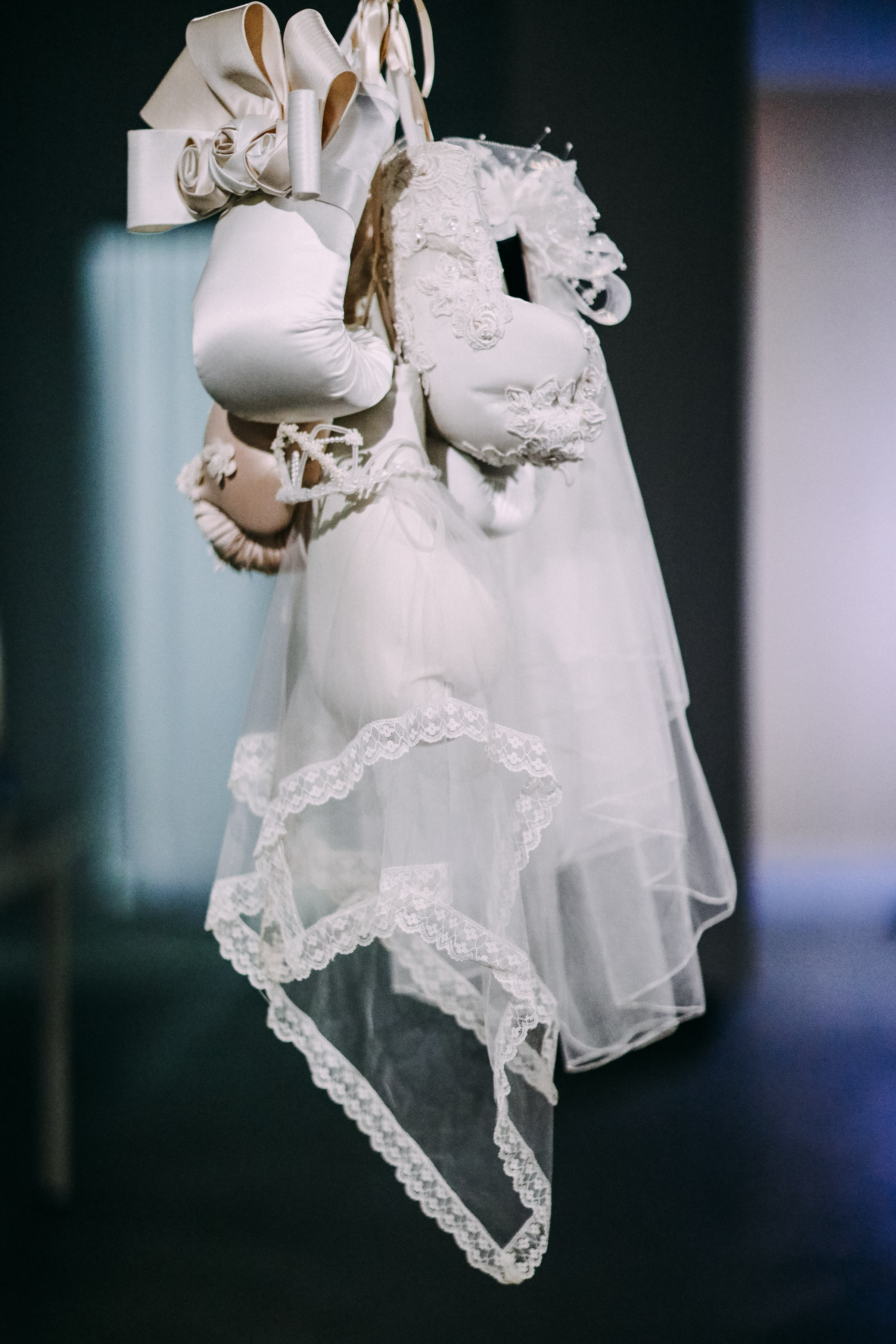In Conversation with Jasmine Wahi: On Diverse Feminism, Art, Life, and Power
Photo by Ventiko.
Jasmine Wahi (she/her) is a wonder woman in the art world - a curator, professor, writer, and cultural producer - there is no limit to her vision of female equity in the arts. Wahi and her business partner Rebecca Jampol, are the force behind Project for Empty Space, where they both serve as Co-Owners and Co-Directors. PES is an artist complex in Newark, with powerful programming focused on women, women of color, artists of color, and queer artists of color. I dive into a robust, frank, and expansive conversation with Wahi on being a badass [brown] female, her practice, and some very exciting projects on the horizon. The genius photographer Ventiko shot exclusive portraits of Wahi for this Gallery Gurls feature.
Gallery Gurls: I've been following you on Instagram for years, and your custom hashtag #badassbrownchick, first comes to mind. In your own words, why are you a 'bad ass brown chick'?
I think at its root 'badassery' is about being unapologetic and unabashed about doing what you want, how you want, when and where you want, without worrying about the repercussions of oppressive social (misogynistic and/or patriarchal) standards.
To be totally honest, I’m tickled by the idea of being a badass brown chick, because it’s such a conundrum within the stereotyped perception of what being a ‘good’ (model minority) South Asian-American, cis-gen femme is. For better or worse, and perhaps to the chagrin of some, I’ve never been able to fit into that mold. I’m far from demure or polite, IDGAF about politeness, and I speak out against what I think is inherently wrong or oppressive to either myself or others. I’m [obviously] not a medical doctor, or a lawyer, or an engineer, nor am I married to one. I’m abysmal at math, and I’ve been known to burn rice.
Being a first-generation, South Asian-American, who grew up in the 90’s, I think I fit a generational mold that constantly probed and prodded into fitting these tropes. In my limited life experience, it seems that the wider acceptance of South Asian/Asian/Brown/Black people doing anything outside of the imposed stereotype is still very novel in the mainstream. Even now, the imposed perception by the mainstream, which is typically oriented around whiteness, about POC is flattening. We become mono-dimensional to fit into a box, or a series of segmented boxes. A badass brown chick is in someways oxymoronic, and unconventional, and that's more or less how I see myself.
"A badass brown chick is in someways oxymoronic, and unconventional, and that's more or less how I see myself."
Work by Hiba Schahbaz from the solo show Hiba Schahbaz: Self Portraits, PES, Gateway Project Spaces.
Works by Angela Fraleigh and Michele Pred, from GRAB BACK; Phase 1, PES, Gateway Project Spaces.
Tell me more about the inaugural Grab Back Feminist Incubator Space that you and Rebecca Jampol started. Since January 2017, you've shown the work of powerful women like Zoe Buckman, Michele Pred, and Hiba Schahbaz.
We started the FIS program as an impromptu project that was initially a reactionary response to the normalization of toxic masculinity and patriarchy (the election of Donald Trump into political office). The artists that you mentioned, which were three of seven artists, were all brilliant and jumped on board with this shared vision of responding or 'grabbing back' as a means of power.
The endeavor was so successful that we decided to incorporate it into our annual program. We have four new artists in place who will be working in a studio throughout the rest of the fall, and then will have an exhibition in early 2018. Our Feminists-in-Residence are Christen Clifford, Katherine Toukhy, Chaya Babu, and Camille Lee.
A little plug for our upcoming project, we're actually showing three #badassartwomen at Pulse this year - Zoë Buckman, Hiba Schahbaz, and Shoshanna Weinberger - and we have an exciting interactive project that we strongly encourage everyone to participate in!
From the solo show Wardell Milan: PERSONA at PES, Gateway Project Spaces.
Can you expand on the current exhibit with Wardell Milan at Project for Empty Space?
I've known Wardell for years, both as a friend and as an artist, and I think this new body of work is some of his most exciting. For as long as I've known him, he has looked at the body, and the idea of one's persona through the lens of sexual, gender, and racial ambiguity. His large-scale pieces from A Series of Inspiring Women, depicts a body-builder-inspired figure that could be androgynous or intersex or trans or all or none of the above. Milan's assertion on identity is that it is not monolithic or stagnant; rather, it is complex and exists in a sliding scale of gray.
PERSONA, his solo show at PES, takes this idea and pushes it deeply into how the art world understands identity, queerness, race, and power. The small collages, which are my personal favorites (and not only because he created them during his residency), literally cut up photographic compositions of Diane Arbus and Robert Mapplethorpe as a means to prompt this conversation. Through this work, Milan also exposes this silent shout, or elephant in the room, that is the problematic nature of mainstream or celebrity white gaze onto the 'marginalized' body. All of the collages from this series pull from Mapplethorpe's The Black Book, which is a very specific series in which the artist endeavored on an exploitative expedition to photograph queer black men as sexual objects. This series perpetuated the dehumanization and deindividualization of the black male body. In using this work, Milan reignites a the complex conversation of power dynamics within intersectional identities.
As you know, Rebecca and I love to push and prod and question anything and everything dealing with social constructionism. We want our audience to feel provoked into acknowledging and discussing the complex and sometimes messy issues that arise through the work that we show. It sounds a little 'afterschool special', but I genuinely believe that addressing social issues that may be uncomfortable is a way to make the world at least a bit more tolerant. Maybe that's wishful thinking, but I like to live with that little slice of hope.
"We want our audience to feel provoked into acknowledging and discussing the complex and sometimes messy issues that arise through the work that we show."
Gateway Project Spaces Founders Rebecca Jampol and Jasmine Wahi. Courtesy of the subject.
You and Rebecca Jampol will curate PLAY, a video and digital art project, for Pulse during Art Basel Miami Beach. The nine selected artists will explore power and what that means. What excites you about this?
It was both a surprise and an honor to be asked back to curate PLAY for Pulse Miami. The platform provides a really great opportunity for video artists; particularly those are might not be represented by galleries, to share their work. Video art is often overlooked in the art fair forum because it's a bit harder to sell, and yet, there is SO much fantastic and impactful work created in this medium. To be able to highlight that work in a forum like PLAY is really exciting for us, and hopefully for our selected artists.
The theme of 'power' was something we organically came up with. Rebecca and I have this process where we sit down and just start spitting out ideas in the vein of a stream of consciousness. 'Power' came to us pretty quickly because the word has proliferated our colloquial vernacular in a really prominent way in the past few months. Of course it's always been around, but that words seems to be overly present. Ultimately we want to de/reconstruct the various ways in which the term is used in a social context. There are so many ways that power is manifested in the realm of human consciousness and we hope that our selection presents a survey of those different definitions, understandings, and nuanced applications of that term.
From Zoe Buckman's solo show Zoe Buckman: Imprison her Soft Hand. Photo by BFA.
From L to R: Helen Toomer, April Hunt, Zoe Buckman, Rebecca Jampol, and Jasmine Wahi at the opening for Zoe Buckman: Imprison her Soft Hand. Photo by BFA.
You're also on the faculty at the School of Visual Arts [MFA Fine Arts], where you focus on 'Intersectional Feminism and Art Praxis'. What do you try and emphasize to your students?
The crux of the course is looking at art history, art future, and art-making through the lens of understanding that our identities are intersectional, and that oppression rooted in Western and colonial social constructionism. I'm so lucky that I've been able to invite members of my #artfamily to come and speak with my class and share their perspectives and experiences as intersectional cultural practitioners with my students.
The overarching message of what I try to impart, and to emphatically reiterate over and over and over again is that we humans, particularly in our global society, are complicated, multi-dimensional, and multi-layered. There is a pervasive tendency in our culture to look at things in terms of strict binaries: we label things as good or bad, black or white, democrat or republican, left or right. We erase complexity and oversimplify everything in a way that is wholly unhealthy, and even dangerous. Binaries are only really relevant in physics, as social beings we transcend forced segmented structures.
My hope is that, if nothing else, my students will take away that the reality of society and social interaction is that we are complicated, we exist in complex and intersectional ways, and every aspect of human interaction should be looked at through a critical and multivalent lens or we won't be able to ever see eye to eye.
I have to admit that even though I’m partially through the semester, I’m still dually excited and anxious about this class, and I lose sleep thinking about it’s potential successes and failures. I suppose at the end of the day, my students will be the ones who can speak to the peaks and valleys of my methodology.
"Binaries are only really relevant in physics, as social beings we transcend forced segmented structures."
Photo by Ventiko.
Follow Jasmine Wahi: @browngirlcurator and @gatewayprojectspaces














